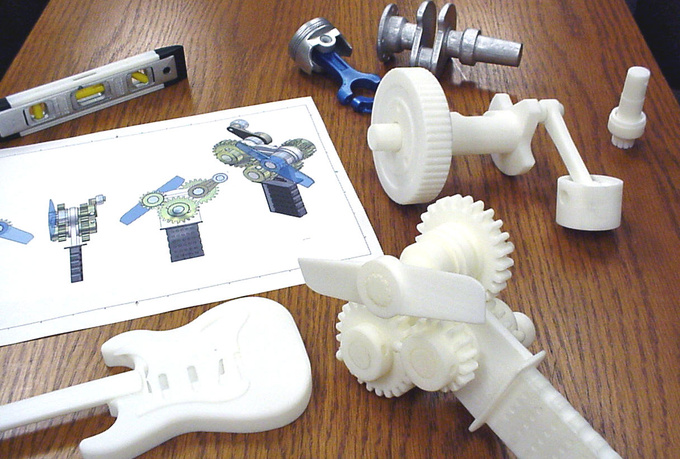
So, you have decided to design a part/assembly in a 3D printer – good luck! In this article I will give you some advice to help you do so, taking into consideration few parameters.
3D Part Design
In order to design a 3D part, you will first need some 3D software like Google Sketch-Up, or SolidWorks.
To create a 3D part in one of those software programs is pretty much like sculpturing. You can start with a raw piece of material and cut shapes from it (like using a chisel) or you can build a complete shape from layers that build on top of each other. Usually, you will be using both methods together.
There’s a big difference between the different 3D software programs, so make sure you choose the program most suitable for your project. For example, Solidworks is best for mechanical mechanisms, and is not that good for artwork, while Google Sketch-up can do some amazing 3D artwork, but lacks the mechanical side.
Choosing a Printer and Material
Most of the simple 3D printers use a spool of plastic called ABS. This plastic is easy to get and easy to use, but is not that strong and durable.
Several printers do offer some strong and durable materials, from nylon to titanium, but these printers are usually very expensive. If you can’t afford one of these printers, or don’t have access to one, you can use websites such as i.materialise.com, which offers you their 3D printing services, printing in many different materials.
You will also need to take into consideration the tolerances and resolution in your design. And, also you will need to make sure that your part is not bigger than the printer’s size limitation!
3D Files for the Printers
After you have designed a 3d part, you will have to save it as a .stl type file, and send it to your printer.
I hope these simple tips will help you to start building your own 3D models.
Cheers,
Ronen Shani
Ronen Shani is from Israel and has been working as a Mechanical Engineer for the last six years. He loves Solidworks!


I’m sitting here watching a piece on the NBC News about guns made by 3d printers. They can fire and can kill. They can defeat security systems. The news smuggled one into a meeting with a Prime Minister. With a certain amount of metal in it, it’s perfectly legal to product and use, but the metal is easily removed. Bullets have small amount of metal in them, but it’s a small enough amount to get past the metal detectors in the security systems. Scary stuff.